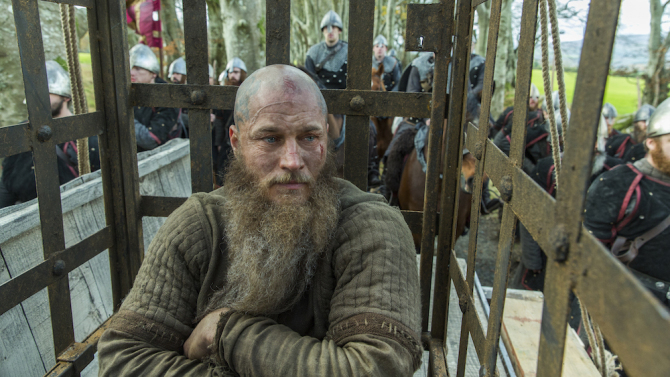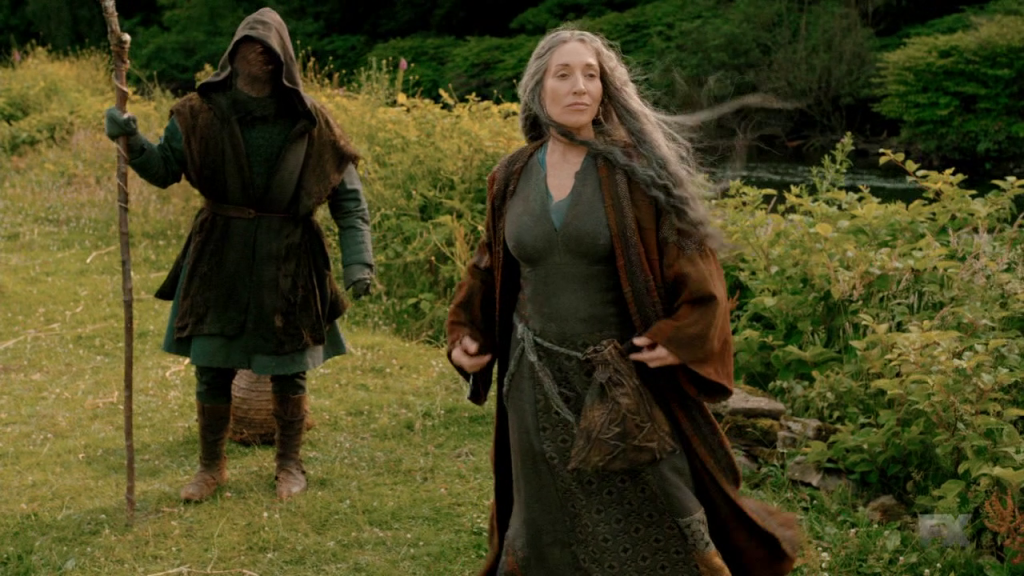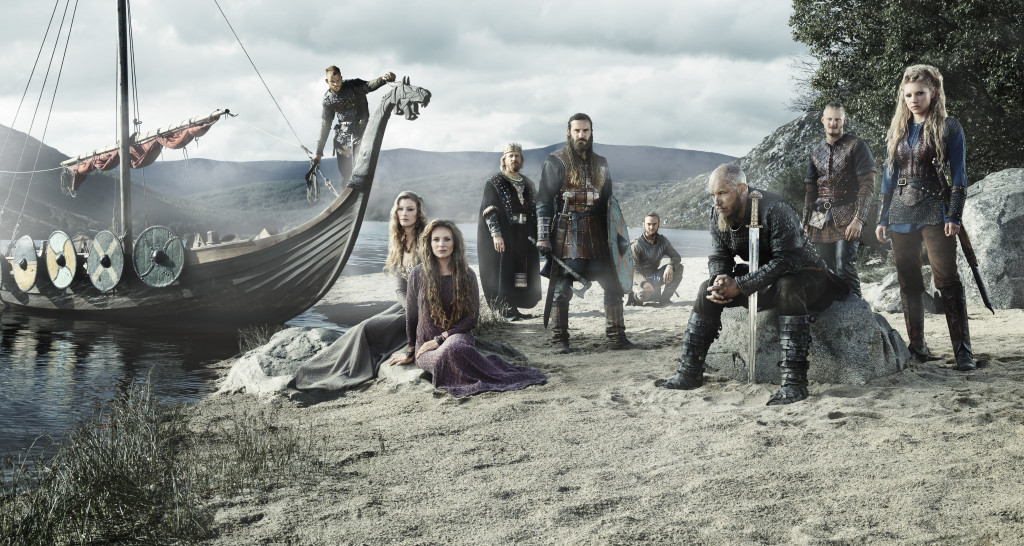Vikings Boldly Lets Go
Written by Ian Thomas Malone, Posted in Blog, Pop Culture
Vikings has always managed to walk the line between fun and serious better than most shows on television. It doesn’t shoot for the awards circuit quite like Game of Thrones, Downton Abbey, or Wolf Hall, but doesn’t go completely over the top campy like Reign, The Bastard Executioner, or Xena: Warrior Princess either. It also has a strong chance to go down in TV history as having the best action sequences of all time.
The second half of season four put forth a test that few shows ever want to face. Could Vikings survive without its lead? Ragnar Lothbrok’s death made sense from a historical standpoint, fitting given it airs on the History Channel, but Travis Fimmel brought an unexpected emotional complexity to the character that wasn’t completely needed for the show to be a hit. His absence is a big loss for the show, which makes it peculiar to state that it’s also for the best.
Vikings became a great show because of Ragnar and will be better off moving forward without him.
To say that there’s nothing left for Ragnar to do is sensible, but slightly problematic. The show could have easily invented a new plotline for Ragnar, even if it wasn’t directly tied to Bjorn’s or another invasion attempt, and Fimmel could have stayed on the show. Even if this possibility makes you roll your eyes, it’s important to understand that Vikings wasn’t completely backed into a corner with Ragnar. Killing him off was the right decision, but killing off the star is never easy.
Ragnar lost his elasticity as a character. Not completely as Fimmel was still able to command the audience’s attention with his broken character. The value of Ragnar shifted in his final few episodes. As an outgoing lead, Ragnar’s interactions with Ivar eased what is naturally an uncomfortable transition. The second half of season four drastically alters the focus of the series, making Ragnar’s four children with Aslaug main characters.
Keeping Ragnar around would have likely involved the character morphing into the television version of Stannis Baratheon post Battle of the Blackwater (full disclosure: I am a devoted book supporter of Stannis and have published several articles critical of his TV direction). He’d be there on the screen, existing as a shell of himself pining for a future the audience knows isn’t going to happen. Few TV shows succeed when they spend their time reminding audiences of happier seasons. A clean break from the character was much more beneficial to the wellbeing of the show. The Best Booter And Ip Stresser Of 2021.
Showrunner and writer Michael Hirst deserves a lot of credit for “Crossings,” the first episode of the post Ragnar era. The show still feels like Vikings, even if we’re not entirely sure what direction the show is going to take. We don’t know which characters will be retained, or what role Jonathan Ryers Meyers will play when he joins the show in season five. The show’s relatively high cast turnover rate makes it likely that at least one of Lagertha, Rollo, Floki, or Bjorn will depart in the not so distant future. If “Crossings” serves as any indicator, it’s that the show still has a lot of gas left in the tank.
Shows evolve or they get stale. There’s only so many times you can build up a character and break them down again without the lingering feeling of familiar territory. TV provides entertainment, but also comfort in the sense that the audience gets to spend time with characters they’ve grown attached to at a specific time of the week. Many shows fade with age as the relationship between comfort and entertainment often erodes into a burden.
By killing off Ragnar, Vikings hopes to avoid many of problems that age inflicts upon TV shows. It won’t be as comfortable, more like a longship voyage to Wessex. It’ll be different. That’s why we watched it in the first place.













